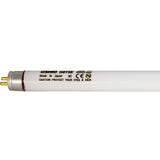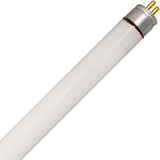Harmful Effects of Ultraviolet Sunlight - UVA and UVB
Posted by Dave on for ProLampSales

With the arrival of Spring and sunnier skies, it is worth a reminder about the power and harmful effects of ultraviolet light.
Sunlight contains both UVA and UVB radiation. These are invisible wavelengths beyond the blue end of the electromagnetic spectrum. UVA, the tanning (and skin wrinkling) portion of the spectrum, is often mistakenly regarded as less harmful than UVB rays.
It is true that UVB packs more energy than UVA. Unprotected skin will burn, sometimes severely, from UVB exposure.
However, UVA penetrates deeper into the skin – to a point below the dermis into the subcutaneous tissue. Because the harmful effects of extended UVA exposure are not as obvious as sunburned skin, they can easily be ignored.
Health professionals now warn that both types of UV radiation can cause skin cancer. For skin protection from both UVA and UVB, they suggest frequent and generous applications of a broad-spectrum, or full-spectrum, sunscreen.
Here on earth, UVA and UVB light sources have been developed to harness the beneficial effects of these sections of the spectrum, while filtering out harmful wavelengths or using the lights in special fixtures and systems that direct the radiation. UVA has a wide range of uses, including curing of inks and paints, adhesives manufacturing, medical applications, tanning beds, insect traps, and special effects. UVB is most often used for phototherapy applications to treat skin disorders. Just beyond the UVA spectrum, deep blue lights are used in aquarium lighting and for treating neonatal jaundice with bilirubin blue bulbs.
UVC light is also part of the ultraviolet spectrum, but it is filtered out by the sun's ozone layer. This is a very good thing, as UVC light of certain wavelengths is the most harmful type of ultraviolet radiation, quickly harming skin and eyes. Humans have developed technology to utilize this type of UV light for medical disinfection of air and surfaces, as well as for water purification.
The bottom line is that all ultraviolet radiation is considered harmful to humans over certain threshold limit values (TLVs) and UV is consider a carcinogen. Frequent or prolonged exposure can lead to cancer, so taking necessary precautions is vital. The most common UV exposure for most people is from the sun during the warmer months of the year.
- Posted in Health, Ultraviolet Light
Featured Products (View All)
0 Comments




